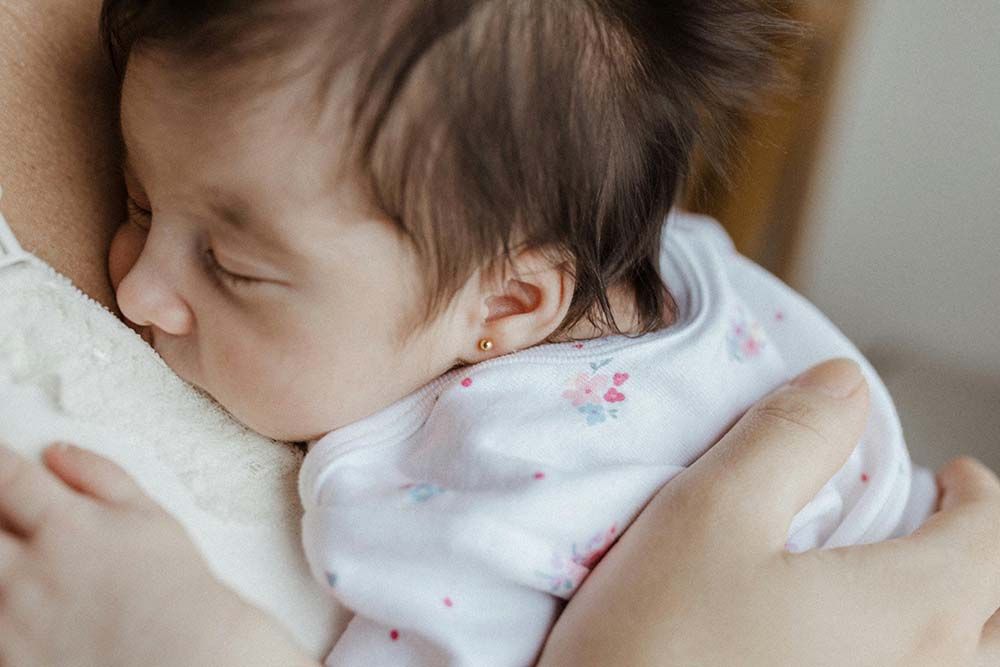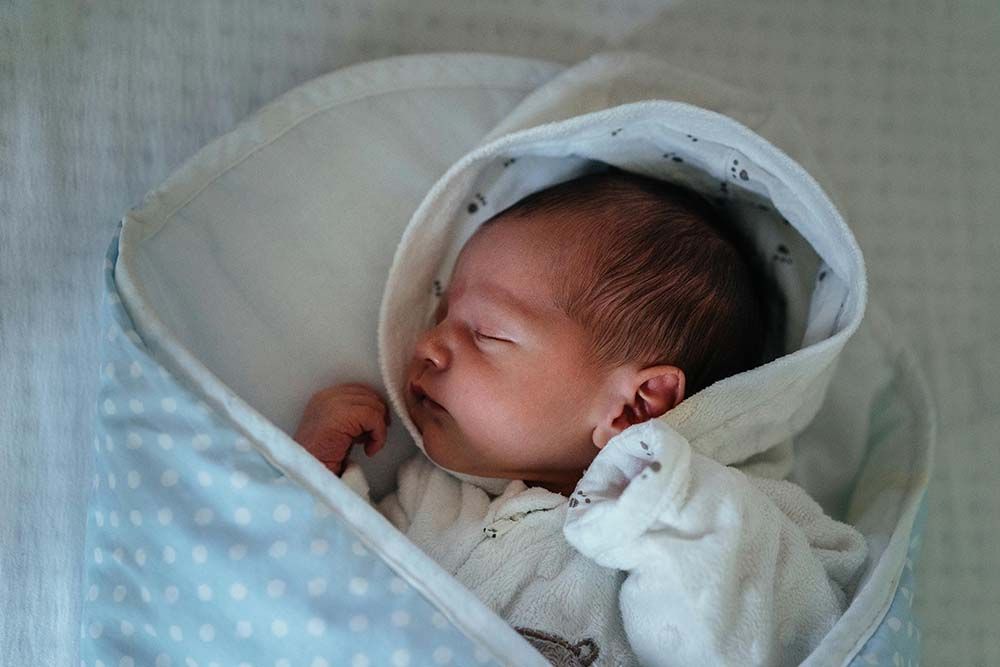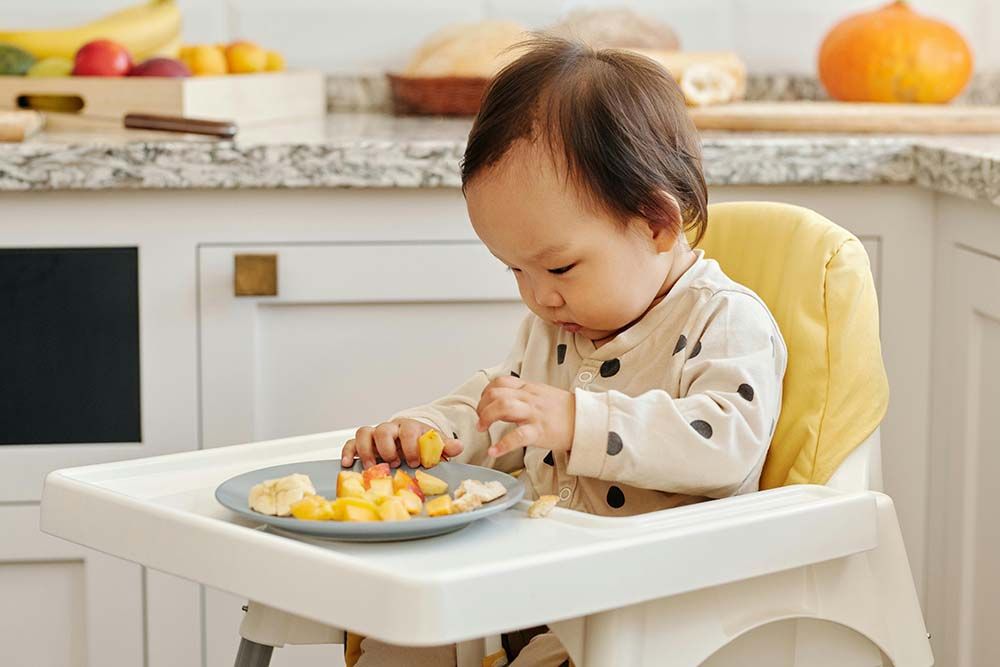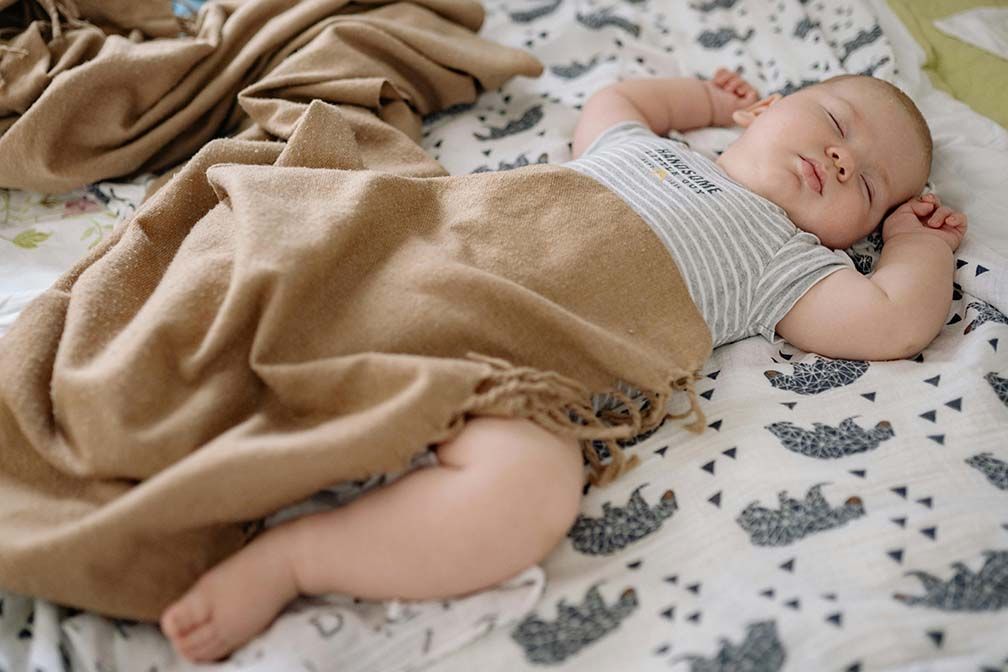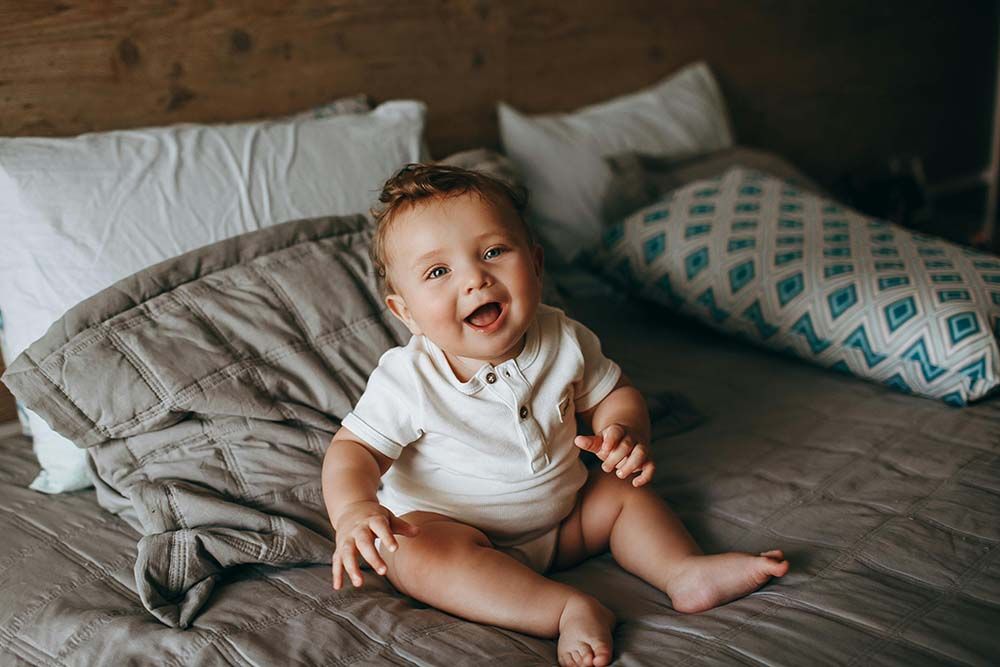

When a baby is born, every developmental milestone can be cherished. Although babies are still unable to express their needs by speaking, facial expressions or sounds can also deliver their demands, from the first cooing to first laughing, which are their way of being understood by others. With the rapid development of babies, they will find that they have the ability to use their hands to do some actions, like wave, clop, point,etc., which can also attract their parents’ attention or express their needs. These actions not only mean the maturity of your baby’s muscle, but also indicate that the improvement of your baby’s cognitive understanding and communication abilities. However, when do babies wave, clap and point? What if they cannot do that at your expected age?
IN THIS ARTICLE
When do Babies Wave, Clap and Point?
Why do Babies Wave, Clap and Point?
How to Help Babies Wave, Clap and Point?
What to do if my Baby Doesn’t Wave, Clap and Point at 12 Months Old?
When do Babies Wave, Clap and Point?
When do Babies Wave?
Babies usually start learning to wave their hands around 6 to 9 months old. This action is an important milestone in the development of infants' social and communication skills, indicating that they are learning how to communicate with others through nonverbal signals. The gesture of waving is actually the result of infants imitating the behavior of those around them. When they see others doing this action and understand that it means social meanings such as "goodbye" or "welcome", they will try to imitate it.
After 12 months, babies will become more proficient in waving and understand the meaning of waving, such as using it to greet, say goodbye, or attract attention from others. During this period, babies' social and language abilities gradually improve, and they begin to interact more with their parents and others through gestures, expressions, and eye contact.
When do Babies Clap?
Most babies usually can clap their hands around 9 months old. At this point, their hand coordination and muscle strength have improved, allowing them to clap their hands together. At first, babies may start this action by seeing and imitating their parents or others clapping hands.
At 12 months, babies are able to better control their hand movements, they will clap more proficiently, and may clap their hands to express happiness or want attention when they see certain things (such as music or toys). This is also an important sign of their social interaction, and clapping is often one of the signs they start interacting with others.
When babies are 18 months old, clapping has usually become a way for them to express their emotions, such as happiness, excitement, welcome, or to indicate that they have successfully completed a certain action.
When do Babies Point?
As for pointing, most babies will start learning to point their fingers at objects at around 9 months old. At this point, their finger coordination and control abilities have improved, allowing them to point their fingers more accurately towards the target. Also, the baby's finger pointing is usually accompanied by eye contact and making sounds at this time, indicating that they want to share their findings with others or attract their attention.
Around the age of 12 months old, babies will use finger pointing movements more frequently. At this point, babies can use guidance to express more social intentions, such as:
- Expressing needs: Pointing to the food, toys, or objects they want to see.
- Sharing interests: Pointing to things they like and trying to share their concerns with others.
- Seeking help: Pointing to an item that cannot be obtained, indicating their desire for assistance.
Do Babies Clap, Wave or Point First?
Considering to physiological development basis and movement difficulty, babies may learn to wave first, then clap, and finally point. But in fact, there is no fixed order for babies to learn to wave, clap, or point first. This largely depends on individual differences, because each baby's physiological development speed, cognitive style, and environmental stimulation are different. For example, some babies may develop hand muscle control relatively early, and have stronger ability to observe and imitate movements, so they may learn to clap first; some babies may be more interested in waving in social interactions, and master waving first after frequent contact and imitation; while other babies may show greater interest in pointing because of the strong curiosity about their surroundings.
Why do Babies Wave, Clap and Point?
Cognitive and Social Development: Clapping, waving, and pointing are all signs of a baby's cognitive and social development. Clapping and waving represent babies learning how to communicate with others through actions, while pointing represents babies beginning to understand the relationship between objects and the world, and learning how to convey intentions.
Language preparation: Although infants may not be able to express themselves clearly in words at this time, these gestures lay the foundation for the development of language. Research has shown that infants who use gestures extensively tend to acquire language faster. Gestures can help babies better understand the meaning of vocabulary and prepare them for speaking in the future.
Imitation learning: Babies are excellent observers who mimic the movements of parents and others they see. When they see people around them clapping, waving, or pointing, they may try to imitate these actions, which is also one of the important ways for infants to learn new skills.
Emotional expression: These behaviors also help babies express their emotions and needs, especially when they are unable to express themselves in language, gestures become their communication methods. Babies express their emotional states through these actions, which helps them establish deeper emotional connections with their caregivers.
Developing hand coordination and motor skills: Clapping, waving, and pointing are all manifestations of the development of fine motor skills. Babies need to coordinate the small muscle groups in their hands to complete these movements. As the nervous system and muscle control abilities mature, infants gradually enhance the coordination of their arms, shoulders, and fingers, laying the foundation for more refined movements such as grasping and writing in the future.
How to Encourage Babies to Wave, Clap and Point?
Helping your baby learn gestures like waving, clapping, and pointing can be achieved by creating a supportive and interactive environment. Here are some specific suggestions to help you promote your baby's development of these skills:
1. Demonstrate and imitate
In daily life, parents can frequently show wave, clap, and point in appropriate situations. For example, when someone leaves, you can wave and say "goodbye", or when you greet someone, you can also hold your baby's hand, wave to the other person together, and say "hello." Doing so can not only let your baby see the use of waving in different social situations, but also allow your baby to participate in the interaction at a close distance, making it easier for him to imitate.
2. Respond and encourage
Give positive responses whenever your baby tries to do these actions. Smile, praise, or imitate their actions to show recognition and support, thereby strengthening their memory of the action and willingness to repeat it. Even while making gestures, parents can explain the meaning of the actions in simple language. For example, "We wave to say 'goodbye'" or "Clap hands to show happiness." Deepen your baby's impression of the uses of different gestures in different scenarios.
3. Learn through games
Many nursery rhymes include actions such as waving and clapping. For example, "Twinkle, Twinkle, Little Star" or "If You're Happy and You Know It", you can do the actions together while singing these songs. You can also use dolls or toys that your baby likes to do these actions, allowing your baby to observe and imitate. This not only increases the fun, but also helps your baby better understand the meaning of the actions.
4. Seize the practice in daily life
Use various situations in daily life to provide your baby with opportunities to practice. For example, wave to welcome guests at the door, or clap to encourage good behavior at the dinner table. When taking your baby out for a walk or to the park, point to distant objects (such as birds, trees, other children) and describe them to your baby, so that your baby knows the relationship between the finger pointing and the object being pointed. At the same time, you can also encourage your baby to try pointing.
5. Create opportunities
You can use visual aids and choose some books or cards with simple pictures and texts that show actions such as waving and clapping. When reading these books, you can point to the characters in the pictures and do the corresponding actions to help your baby understand.
6. Participate in social activities
Take your baby to parent-child activities or get together with other families, so that your baby has the opportunity to observe how peers do these actions and learn from them. You can also play children's programs. Some TV programs or videos designed for young children will also show these basic gestures, and your baby may learn new things from them.
7. Be patient and consistent
Your baby may need to observe and try many times to master these movements. Be patient, demonstrate repeatedly, and provide practice opportunities in different occasions. In addition, set reasonable expectations. Each baby develops at a different speed. Some babies may learn these movements faster, while others may take more time. It is important to guide according to the baby's rhythm, rather than forcing.
What to do if my Baby Doesn’t Wave, Clap and Point at 12 Months Old?
Firstly, it is important to understand that the developmental rate of each baby is different. The time range of these actions is only a reference, and some babies may only start developing these skills slightly later. You can continue to observe the baby's development in other aspects, such as whether the movements of sitting, crawling, grasping, etc. are normal, and pay attention to whether the baby has eye contact, smiling, responding to sounds, etc. with others. If other aspects are developing well, it may just be that it is not yet time to develop these hand movements. At this time, you can patiently wait for a period of time.
If possible, you can join some parent-child activity groups or communities to communicate with other parents, share experiences and suggestions. During this process, you can record your baby's progress and any new skills. This can not only help you track your baby's development, but also provide useful information when communicating with doctors. By the way, if you think that it is troublesome to manually record those data, it is recommended to use a reliable baby track app, such as Moonycare, which is easy to use and convenient for you to keep tracking.
![]() If your baby shows delays in multiple developmental areas, or if you are deeply worried about your baby’s development, you can consider consulting a pediatrician or child development specialist. They can determine whether the baby has developmental problems through professional assessments and provide professional advice and treatment based on the baby's specific situation. What’s more, doctors can conduct a comprehensive health check to rule out any potential medical issues.
If your baby shows delays in multiple developmental areas, or if you are deeply worried about your baby’s development, you can consider consulting a pediatrician or child development specialist. They can determine whether the baby has developmental problems through professional assessments and provide professional advice and treatment based on the baby's specific situation. What’s more, doctors can conduct a comprehensive health check to rule out any potential medical issues.
What Comes Next?
After babies have mastered clapping, waving, and pointing, they are usually at the age of about 12 months. According to the baby's development pattern, the next milestone usually appears between 12 and 18 months, and the specific time and progress vary depending on the individual differences of the baby. Here are several major development milestones divided by age:
Around 12 months (about 1 year old)
- Make some simple words, such as “mama”, “dada”
- Understand simple instructions, like “come here”
- Imitate others’ actions and expressions more often
- Respond more to others, such as responding to smiles or simple sounds
12 - 15 months
- Try to stand or work with support
- Point to their interesting objects
- Demonstrate more emotional expressions, including happiness, anger, fear, etc.
15 - 18 months
- More vocabulary with 2-3 words at once
- Walk freely
- Can understand simple instructions without gestures
- Take part in more social interactions, and can play with parents or other children
- Play with more purpose, such as starting simple role-playing.








